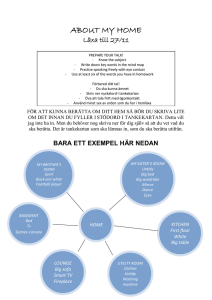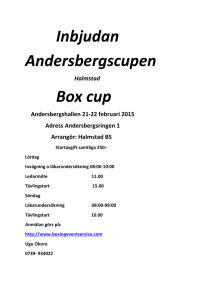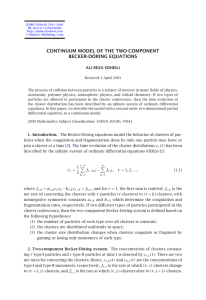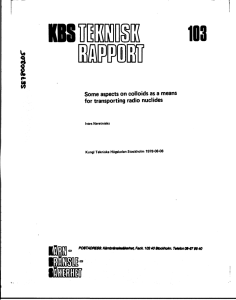Diathermy and airborne particles in operating rooms
advertisement
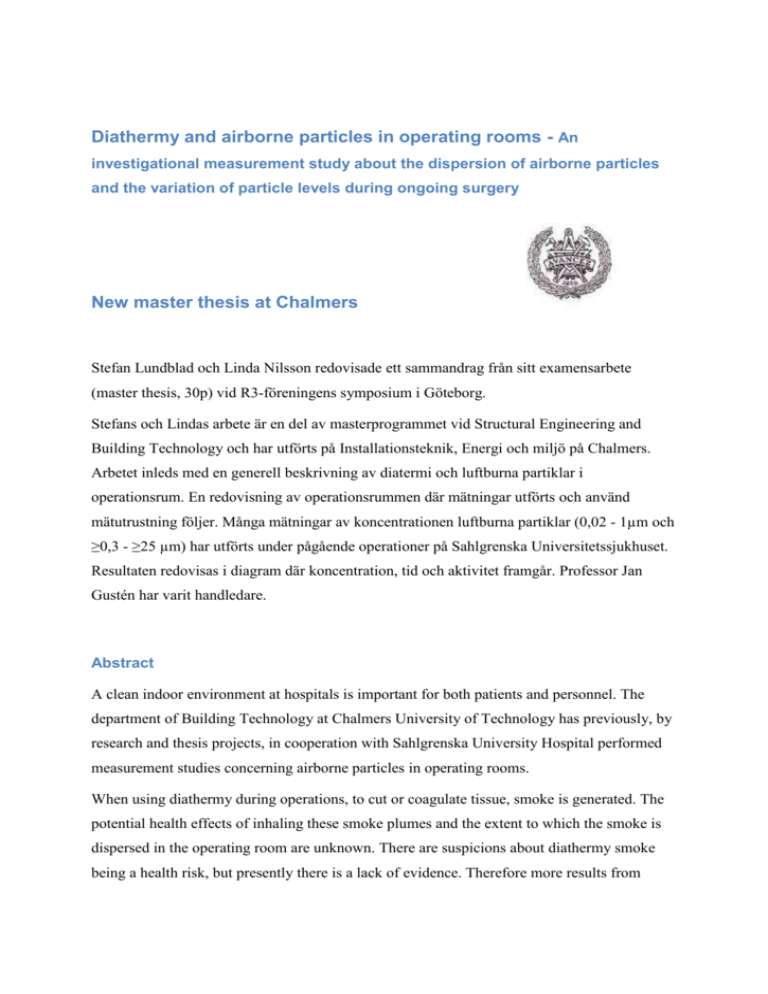
Diathermy and airborne particles in operating rooms - An investigational measurement study about the dispersion of airborne particles and the variation of particle levels during ongoing surgery New master thesis at Chalmers Stefan Lundblad och Linda Nilsson redovisade ett sammandrag från sitt examensarbete (master thesis, 30p) vid R3-föreningens symposium i Göteborg. Stefans och Lindas arbete är en del av masterprogrammet vid Structural Engineering and Building Technology och har utförts på Installationsteknik, Energi och miljö på Chalmers. Arbetet inleds med en generell beskrivning av diatermi och luftburna partiklar i operationsrum. En redovisning av operationsrummen där mätningar utförts och använd mätutrustning följer. Många mätningar av koncentrationen luftburna partiklar (0,02 - 1µm och ≥0,3 - ≥25 µm) har utförts under pågående operationer på Sahlgrenska Universitetssjukhuset. Resultaten redovisas i diagram där koncentration, tid och aktivitet framgår. Professor Jan Gustén har varit handledare. Abstract A clean indoor environment at hospitals is important for both patients and personnel. The department of Building Technology at Chalmers University of Technology has previously, by research and thesis projects, in cooperation with Sahlgrenska University Hospital performed measurement studies concerning airborne particles in operating rooms. When using diathermy during operations, to cut or coagulate tissue, smoke is generated. The potential health effects of inhaling these smoke plumes and the extent to which the smoke is dispersed in the operating room are unknown. There are suspicions about diathermy smoke being a health risk, but presently there is a lack of evidence. Therefore more results from measurements are needed to get an idea about health consequences of inhaled diathermy smoke. It is rather well known that it is of importance with a clean surrounding close to the surgical wound. Focus has been on having a clean zone with LAF-ceilings and the use of sterile gowns in the zone closest to the patient, while just a few meters away there are not the same requirements on clothing and cleanness. For that reason it is of great importance to investigate how particles are dispersed between the different zones in the operating room. The work enlightens the magnitude of particles spread to different parts of the room, depending on the diathermy techniques being used and the activity in the operating room. Measurements where performed in a number of operating rooms, during several operations and with various locations of the measuring equipment. By measuring particle concentration in size intervals (0,02 - 1µm and ≥0,3 - ≥25 µm) during ongoing surgery, the relationship between the diathermy instruments being used, activity in the operating room and dispersion of particles was investigated. The use of argon diathermy, monopolar and bipolar diathermy cause instantaneous and distinct increase of the particle concentration close to the source and rather quickly increased concentration in the whole operating room. The results indicate that the use of argon diathermy give the highest concentrations of airborne particles.
